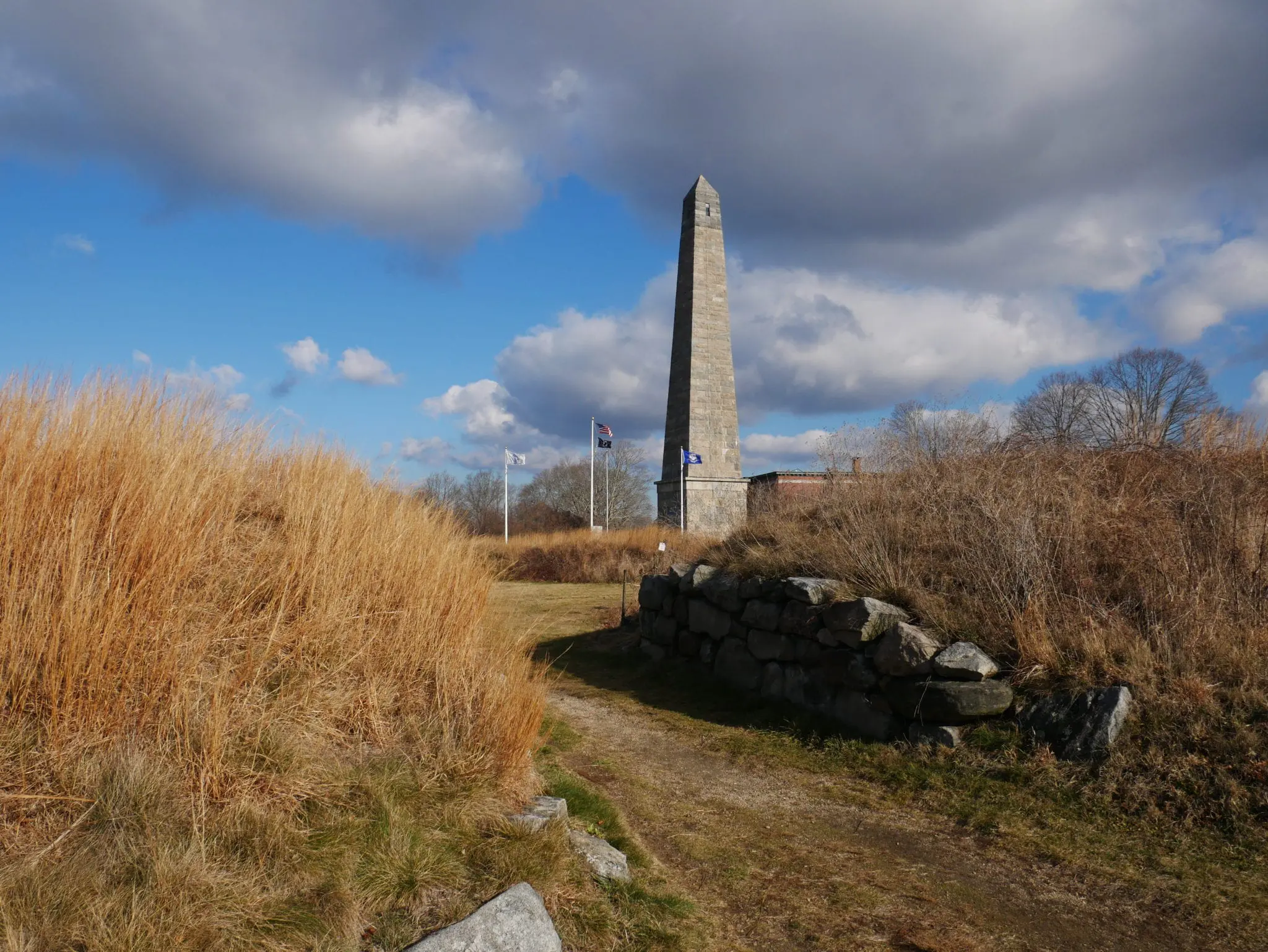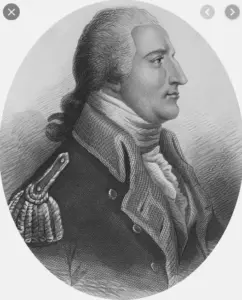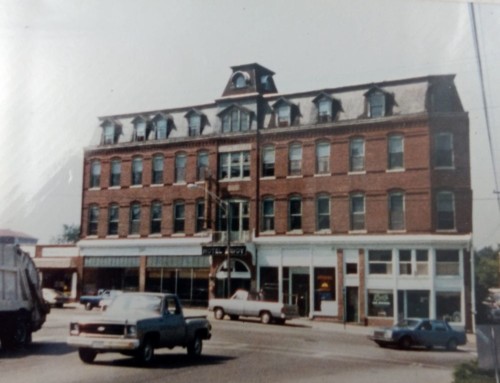Fort Griswold Battlefield State Park in Groton, Connecticut is the historic site where, on September 6, 1781, British Forces, commanded by the infamous Benedict Arnold, captured the fort and massacred 88 of the 165 defenders stationed there. After the fort fell the story goes that Colonel Ledyard was killed by his own sword after surrendering. But did this really happen or is it a myth shrouded in the fog of war?

The fort was under the Command of Colonel William Ledyard. He immediately ordered two canons to be fired which was the signal to the local militia that an attack was imminent. However, during the Revolutionary War New London had many British sympathizers and spies who gave the signals to the traitor Benedict Arnold. When Colonel Ledyard fired the two canons, Arnold had arranged for a British ship to fire a third shot. Three canon shots was the signal that a friendly ship was entering the harbor. The militias heard the three shots and were deceived; consequently, reinforcements didn’t come to the aid of the fort.
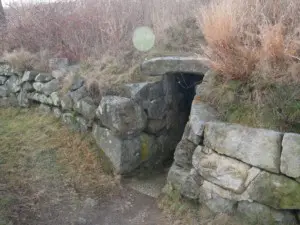
When the Revolutionary War began Ledyard was named the first captain of the artillery company at Fort Griswold. Later he was promoted to major and by the time the British attacked he’d been promoted to Colonel and was given command of both Fort Trumbull and Fort Griswold. Under his direction, both forts were repaired and strengthened but both were undermanned and under-equipped.
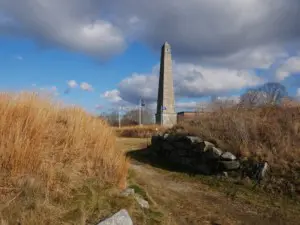
Arnold split his force of 1900 men into two divisions. He would lead 800 men, about half of the British force, against New London. Major Montgomery would take the rest and attack Fort Griswold on the Groton side of the Thames River. Arnold landed on the western shore, about three miles below New London, and marched on the town. Arnold’s men, carrying torches, set fire to the town burning warehouses and ships. The fire quickly spread destroying 143 buildings including 65 houses.
On the other side of the Thames, Lieutenant Colonel Edmund Eyre led a large mixed force of American loyalists, Hessian mercenaries, and British regulars against Fort Griswold. When the British sent a message demanding Fort Griswold’s surrender Ledyard responded, “We shall not surrender, let the consequences be what they may.”
Fort Griswold held a commanding position on top of a bluff with stone and earthen ramparts guarded by a dry moat. The steep slope was strengthened by stakes with sharpened ends along with bundled sharp branches, a form of early barbwire, designed to prevent anyone from climbing up. However, the fort was weaker than it appeared. There was little ammunition for the cannons and the volunteers that made up the garrison were mostly local farmers who had little military training.
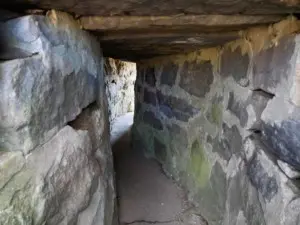
After Ledyard refused to surrender the British moved in to attack the fort on three sides. The American defenders opened fire with cannon and musket fire as the red-coated British stormed up the hill. The fighting was fierce and large numbers of British soldiers were cut down. Colonel Eyre, the British commander, fell wounded and was removed from the battlefield. New London historian Frances Manwaring Caulkins asserted that Eyre was mortally wounded, while Benedict Arnold reported that Eyre survived.
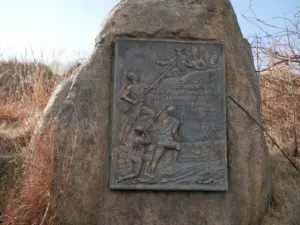
The Americans raised their fallen flag on a pikestaff and opened fire. The British were enraged by this seeming treachery and furiously pressed their attack. Fighting desperately, even throwing cannonballs down on the attackers, the Americans finally were driven back at the southwest corner of the fort. A British soldier ran to the gate, opened it, and a stream of perhaps 600 British attackers swarmed onto the parade ground. Realizing that further resistance was futile Colonel Ledyard called out to his men to lay down their arms and surrender.

The story goes that a British officer entering the fort called out, “Who commands this fort?” Ledyard replied, “I did, but you do now,” at the same time surrendering his sword by the hilt. The British officer then reportedly took Ledyard’s sword and plunged it into Ledyard’s body. But did this really happen? Some accounts claim that Captain George Beckwith killed Ledyard, while others claim that it was Captain Stephen Bromfield, who assumed command after Major Montgomery was killed. What is known is that he was found dead but no one that actually saw him killed ever came forward. Ledyard’s men were too busy trying to stay alive as the British continued to massacre them after they had surrendered.

Captain Solomon Perkins wrote:
“I with a number of others being on the parade grounds perceiving they gave no quarters we retired into a room in one of the barracks in hope of escaping their fury, but an officer of the British came to the door and ordered us to lay down our arms. We accordingly lay down our arms and begged for quarters. He damned us and told us we ought to be put to death immediately. Upon this another officer came to the door with some soldiers and asked the first officer why he didn’t put us to death, the other replied that we had begged for quarters. He again replied that he would be damned if he granted us quarters or something to that effect and immediately ordered his men to fire in upon us.
They fired and some were wounded and we crowded up in the opposite corner of the barracks being shut up and could not make no escape. They continued firing and killing. We pressed up against the partition and burst out into the next room and as I was getting the door I received a whole charge into my neck the ball coming out at the opposite side. That brought me down and nearly deprived me of my senses after which they put a ball through my body and pierced me three times with a bayonet.”

So the question remains, how did Colonel Ledyard perish? Was he killed with his own sword by the enemy commander? The ranking British officer, Major Montgomery lay dead on the battlefield, killed by Jordan Freeman, Ledyard’s body servant. Accounts differ, some say that a Major Bloomfield took command, others say a Major Beckwith. In all of the bloodshed, no one noticed Ledyard’s killer. Respected historian Frances Manwaring Caulkins and author of the book, The History of New London, advised us to let the matter rest. “Let him be forever unknown and unnamed.”
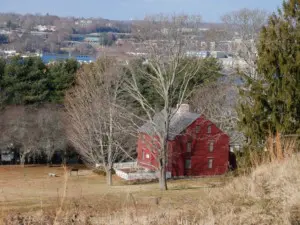
When the killing ended 88 Americans lay massacred. An additional 35 were seriously wounded; some died later of their wounds. The Americans who survived were taken away as prisoners. The British losses were also severe with 53 slain in the attack and another 133 wounded, almost a quarter of the assault force, many of whom would later die from their wounds. Later, when Benedict Arnold met with his British superiors in New York the British were appalled at the heavy losses suffered, and for what? The British forces evacuated New London and Groton only hours after the battle ended. Fort Griswold was back in American hands by night fell.
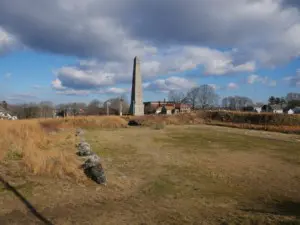
Regardless of how he died Colonel Ledyard was celebrated as a hero after his death. In 1830, a granite monument was erected to commemorate the men who fell in the battle. The monument bears a plaque describing the events of the Battle of Groton Heights and another plaque with the names of the Americans who died in the battle. In 1836 Groton’s North Parish became a separate town and it was named Ledyard in his honor. Fort Griswold Battlefield State Park was designated a state park in 1953.
